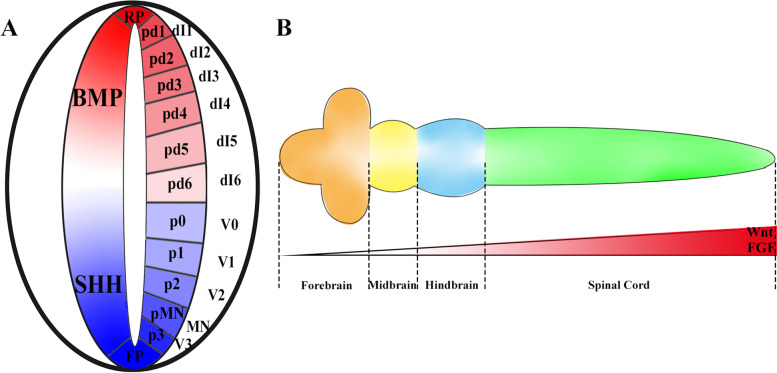Fig. 2.
Concentration gradients of different morphogens pattern the neural development in vivo. A The dorsal–ventral patterning of the vertebrate neural tube. During the neural tube formation, the BMPs secret from the RP at the dorsal-most and the Shh secret from the FP at the ventral-most, forming two opposing gradients to pattern the neural tube. In response to the gradient signaling, the proliferative progenitor cells and the postmitotic neurons differentiate from the proliferative progenitor cells distributed in a specific order along the dorsal–ventral axis. The dorsal part contains six dorsal progenitor (dP) domains (dP1–dP6) and then differentiate into the dorsal interneuron (dI) populations (dI1–dI6). The ventral part contains five progenitor (p) domains (p0–p3 and the pMN) and differentiates into the ventral (V) interneurons (V0-V3, MN). B The anterior–posterior regionalization of the vertebrate nervous system. After the neural tube formation, the vertebrate neural tube can be further patterned along the anterior–posterior axis (rostro-caudal) axis into four parts (forebrain, midbrain, hindbrain and spinal cord) by a gradient of Wnt and FGF

